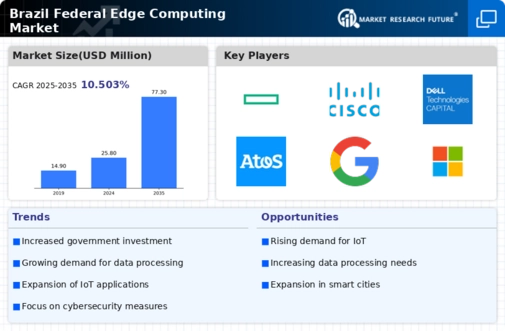The market for federal edge computing in Brazil is expanding significantly due to a number of technological, political, and economic issues. The Brazilian government's emphasis on digital transformation and smart city projects, which are meant to increase the effectiveness and delivery of public services, is a major market driver.
The country's connection is being improved by initiatives like the National Broadband Plan, which is encouraging the deployment of edge computing technologies that can process data closer to consumers. There are many chances for domestic and foreign companies to implement edge computing solutions that cater to the particular requirements of the federal sector as Brazil looks to fortify its infrastructure.
The need for real-time data processing skills in the public sector has clearly increased in recent years. Brazil's dense population and metropolitan areas produce a lot of data, thus effective solutions are needed to meet this need.
Additionally, Brazilian government authorities are investigating edge computing due to its potential to keep sensitive data locally, in compliance with laws like the General Data Protection Law (LGPD), as a result of the growing emphasis on data security and privacy.
There are many prospects to be investigated, especially in creating edge models that serve these communities while also bolstering federal activities, despite obstacles like the lack of technology connectivity in rural places.
Additionally, cooperation between the public and private sectors may spur innovation, as tech companies collaborate with the government to develop cutting-edge solutions for a range of applications, such as public safety, healthcare, and transportation.
Brazil's federal edge computing landscape is expected to continue evolving, forming a more connected and effective future for the country, thanks to the combination of emerging technology and a supportive political framework.










